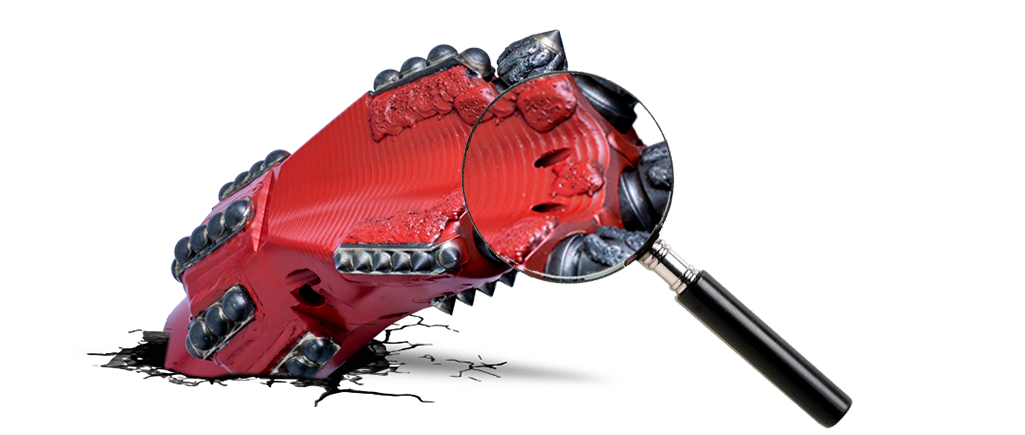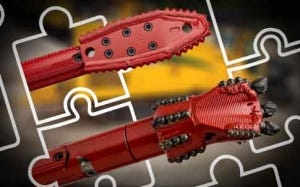
When drilling your pilot shot, it's tempting to throw the biggest, baddest bit in your toolshed onto your drill and call it a day. Inexact tooling choices might get the job done eventually, but will hamper productivity and expose your HDD bits and other tools to unnecessary wear and tear.
Knowing what to look for before you begin drilling and familiarizing yourself with some of the key differences between HDD drill bits will help you choose the best tool for the job. Here's what you need to know.
Check the size of your HDD bits against the area you’re drilling
The first step in selecting the best bit for your job is to know the diameter and quantity of the pipe you'll be installing. Keep this knowledge in mind as you walk the path you're planning to shoot. As you look at the depth and location of various other utility packages, evaluate the thickness of your own HDD drill bits and whether they offer you the ability to weave through existing utilities or circumvent them with sufficient clearance on all sides. You goal is to drill a hole with the minimum diameter that will enable you to successfully pull product without squeezing or stretching the pipe.
Check the ground conditions
It's impossible to know exactly what type of soil you'll run into during your job, but it's possible to get a pretty good idea before you begin. Inspect the soil in your entry and receiving pits. By physically handling the dirt, you'll get a sense of the layers of material running through your bore path. Of course, with all HDD jobs, there will be surprises, but having a good idea upfront of the type of material you'll be drilling will help select the bit that's best for the job.
Here are the types of HDD bits you should use in each soil type.

Sand
Sand drilling requires a pointed bit with protective carbide buttons that help you snake your way through abrasive conditions. Because there's less surface area to push off of, direction changes might take a little longer. However, a directional drilling bit or blade with a wider front, like Excalibur, can help mitigate steering issues.
Shale
To penetrate shale, a horizontal drilling bit needs to break up the material and successfully move it out of the way. A bit with sharp teeth performs ideally in these conditions. You should look for one with removable carbide cutters to get more life out of your HDD tools.
HDD bits like the Eagle Claw SD often end up being the best bang for your buck. Your initial investment may be much greater than buying a typical aggressive bit, but once you realize you will wear out ten or more of those other bits before needing to rebuild your Eagle Claw, the decision becomes obvious.
Clay
If it's a softer clay, you'll usually want a blade that has a wide surface area to help with steering. A harder or compact clay will require a bit with more of a point. Carbides aren't a necessity, but it doesn't hurt to have their extra protection.
Cobble
Drilling cobble is more about moving smaller pieces of material out of the way than it is about boring through a hard rock surface. The general rule when selecting a directional drilling bit for cobble is to look for a tool with dome cutters that will roll off the rocks. Trying to bust through the material will just create unnecessary wear. This is because HDD drill bits with teeth extending out from their face, or those with more of a point, will tend to hang up on the cobbles or snap off altogether.
Hardpan & Gravel
In these challenging underground drilling conditions, you'll need a rounded bit that can chew through the material while also providing enough surface area to facilitate direction changes without slowing down. Look for blades with a round nose and aggressive front and side cutters. Rock Saw is a perfect example of a horizontal drilling blade that can handle the job.
Rock
For drillable rock, you'll want an aggressive bit with a steep taper that helps with steering. Our appropriately-named Steep Taper Ultra Bit 3 features conical carbide cutters that work relentlessly on the rock to carve out a clean-cut path.
Innovation is changing the game
We're always looking to make things easier and more efficient for drillers. Lots of R&D goes into adjusting the specs and features of HDD bits to improve their performance. For us, the star of our HDD tooling fleet is our newest blade: the Red Diamond.
Red Diamond is an ideal, all-around bit that will take on any soil in its path — it's like driving a tank underground. Though Red Diamond can stand up to abrasive material like sand, it's better to save this bit for conditions in which standard blades might struggle. Designed with solid carbide as a protective armor on all sides, this steep tapered blade can out-drill and outlast pretty much every other blade on the market. This longevity isn't great for sales, but it's a dream come true for drillers!
Choose the Right HDD Bits for Horizontal Drilling from Melfred Borzall
Bit choice is a big deal. Knowing your bore path before you begin will help you choose HDD bits that will give you the best shot at success. Invest in directional drill bits and blades that are designed to handle the types of soil and clearance requirements you encounter most often. Having the right bit at the ready is a smarter, faster way to work.
Have a question about which bit is best for your job? Our expert HDD tooling distributors are here to help.



